Church of the Most Sacred Heart by Jože Plečnik Photo: Martin Hapl via Flickr
Working simultaneously with the German Expressionists yet using a totally different stylistic idiom, the Slovene architect Jože Plečnik produced some of the most original religious architecture of the 20th century, one which can hardly be categorised. Displaying eclectic cultural references using generous ornamentation, somewhat at contrast with the more stark contemporary designs, many of his churches hide behind a traditional cloak a very Modern approach to liturgical program. It is the case with one of his most famed works, the church of the Most Sacred Heart in Prague, built between 1929 and 1932.
Commissioned by a growing Catholic community in Vinohrady, the design development of this church was marked by financial constraints. The competition wining proposal of a three-aisled nave and separate bell tower had to be reworked and reduced in scale, ending up with an almost secular interior which the architect strived to subsequently sacralise step by step.
The exterior of the building is determined by its position in the urban context and the square on which it sits, also designed by the architect. Dominating the setting with a massive, volumetric body, the church is formed by a heavy and regular nave surmounted by an imposing bell tower stretching the full width to give the impression of monumentality.

Church of the Most Sacred Heart, bell tower Photo: Jynto via Flickr
The unusually broad front elevation is also a paraphrase of a Gothic cathedral elevation with an entrance emphasised by three portals with massive surrounds. The dark brickwork with light projecting quarry stones is intended to suggest a royal ermine robe, symbol of Christ the King, while the upper part of the church representing the white linen is decorated with stylised garlands, Secessionist frames as well as Classical and Oriental elements. The gentle outward movement at the top of the walls and portals, growing slightly towards the windows is, together with the obelisks flanking the bell tower, of Egyptian influence. Placed above the wide corridor that separates the sanctuary from the sacristy, the 42m tower, topped with a three metre copper dome and a bold four metre cross, is perforated by a large clear-glass rose window offering a glimpse of the ceremonial ramp leading to the bells.
Church of the Most Sacred Heart, bell tower ramp Photo: Rory Hyde via Flickr
Inside, the walls are plain brick articulated by pillars in a simple rhythm and decorated with small golden crosses which echo the pattern outside. In the spirit of the Liturgical Movement, the church is conceived as a unified space with clear sight lines to the main altar. The single nave with a wide, column-free interior and flat coffered timber ceiling is reminiscent of an early Christian basilica. The clerestory is separated from the lower part of the wall by a narrow gallery which forms a white strip surrounding the interior and highlighting the impression that the ceiling is floating above.
Church of the Most Sacred Heart, interior Photo: Number8photo via Flickr
The sanctuary is brought into the body of the church, slightly raised above the nave and covered in precious natural stone. A three-metre gilded figure of Christ hangs above the plain white marble altar with a base articulated with columns and supporting a richly decorated tabernacle. Flanking the figure of Christ are six figures of Czech saints – St John of Nepomuk, St Agnes, St Adalbert, St Wenceslaus, St Ludmila and St Procopius. The side altars are set diagonally into the corners, each supported on a single column placed at its centre.
Church of the Most Sacred Heart, sanctuary Photo: Rory Hyde via Flickr
Combining Modern design elements with traditional undertones, the church of the Most Sacred Heart in Prague fully embraces Liturgical Movement ideals, yet without compromising too greatly on the sense of sacred and ceremonial. Despite the small scale, it succeeds in creating an imposing presence through its bold and simple exterior while conveying a sense of balance with its warm and luminous, if plain, interior.
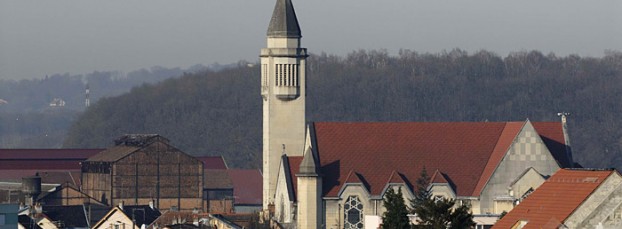
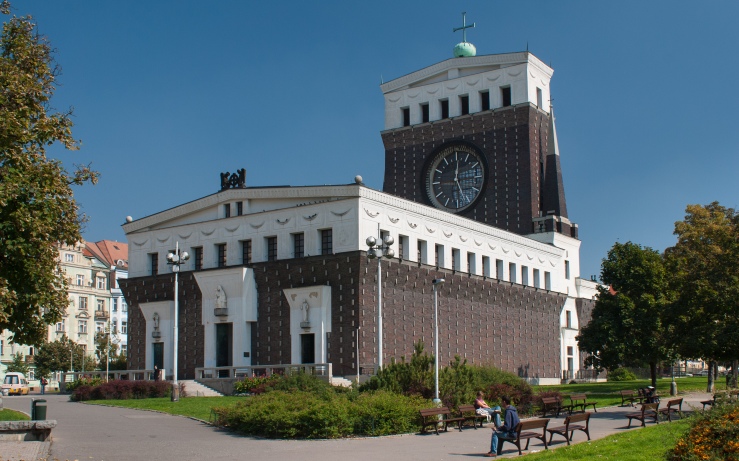
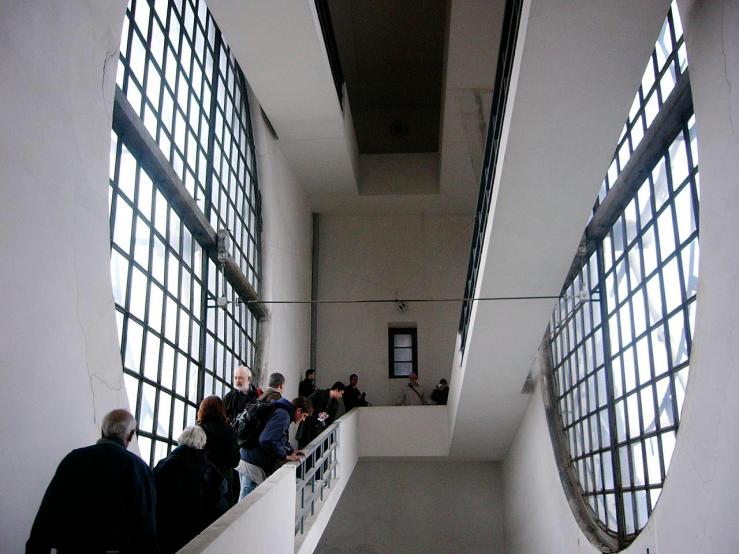
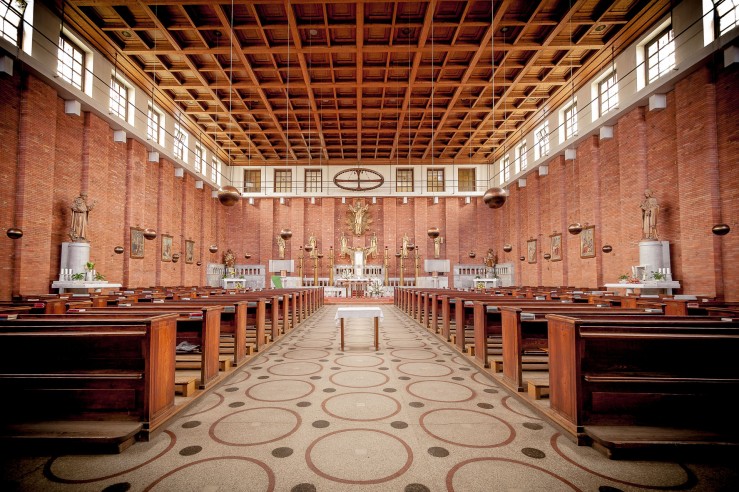
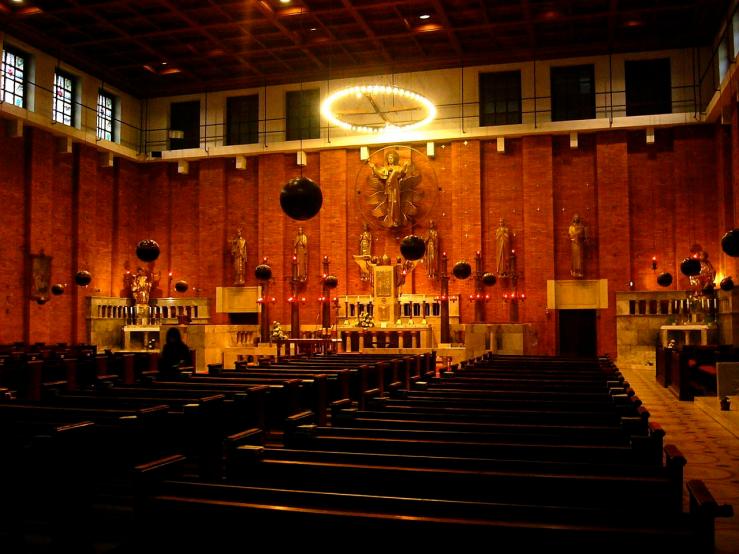
[…] (a fotók forrása) […]
[…] the site New Church Architecture, they list the influences of the building as Gothic. The author of the site, […]